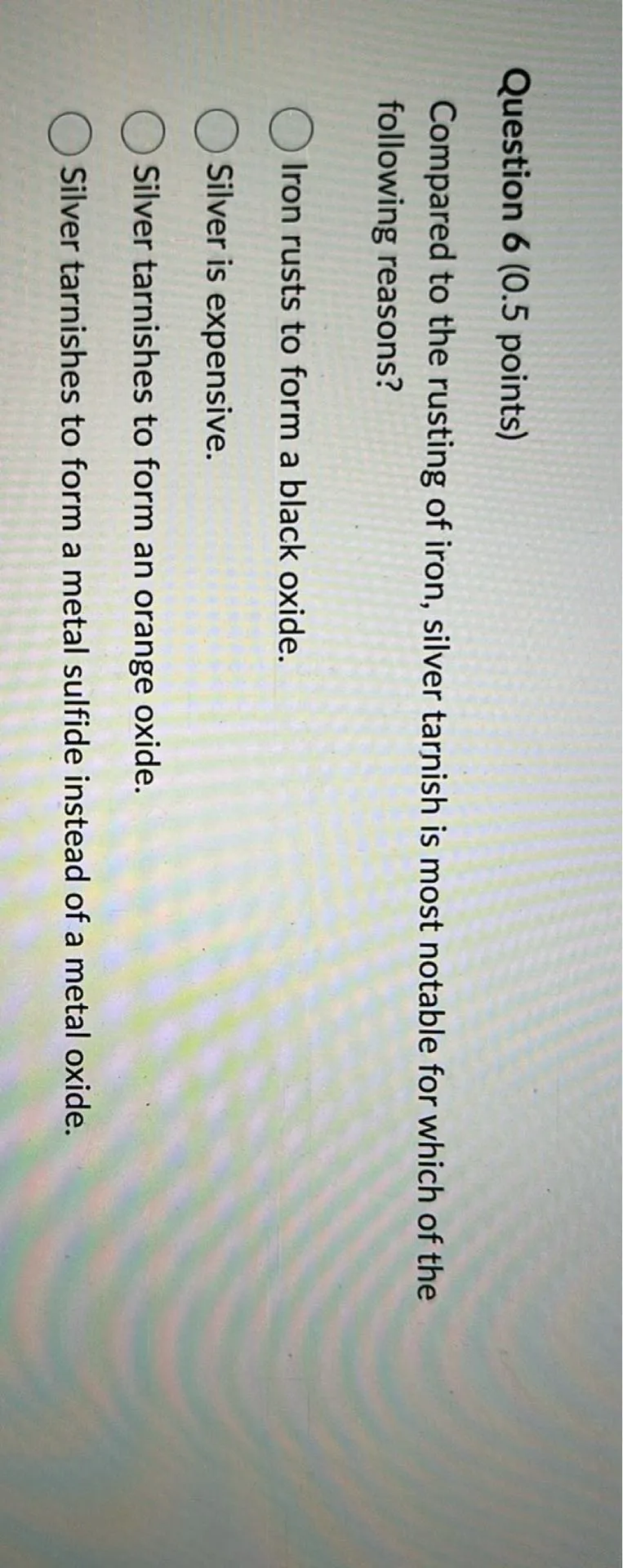The question asks for the notable reason why silver tarnish is different from the rusting of iron.
Understanding rusting of iron
Iron rusts to form iron oxides, typically red-brown in color, not black. This process involves the reaction of
The question asks for the notable reason why silver tarnish is different from the rusting of iron.
Understanding rusting of iron
Iron rusts to form iron oxide, which is typically reddish-brown in color, not black.
Understanding tarnishing of silver
Silver tarnishes to form silver sulfide, which is a black compound, not an oxide. This is different from iron, which forms an oxide.
Evaluating the options
- The first option is incorrect because iron oxide is not black.
- The second option is irrelevant to the chemical process.
- The third option is incorrect because silver does not form an orange oxide.
- The fourth option is correct because silver forms a metal sulfide, not a metal oxide.
\(\boxed{\text{Silver tarnishes to form a metal sulfide instead of a metal oxide.}}\)
The notable reason why silver tarnish is different from the rusting of iron is that silver tarnishes to form a metal sulfide instead of a metal oxide.






